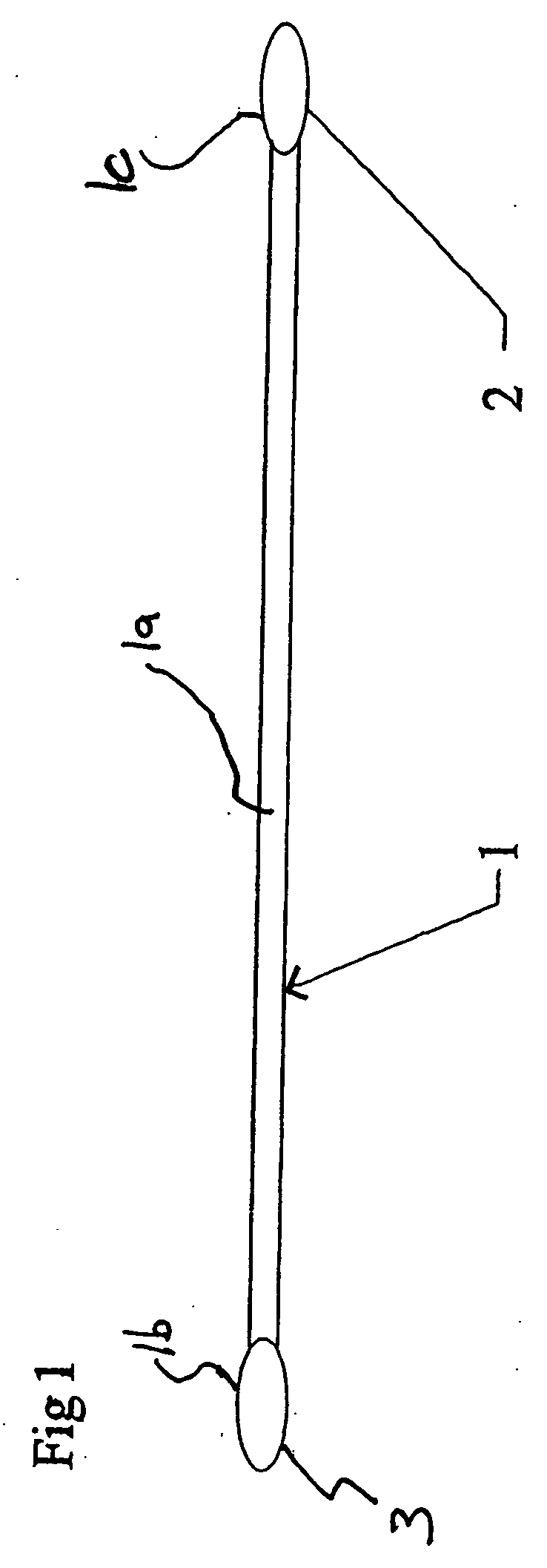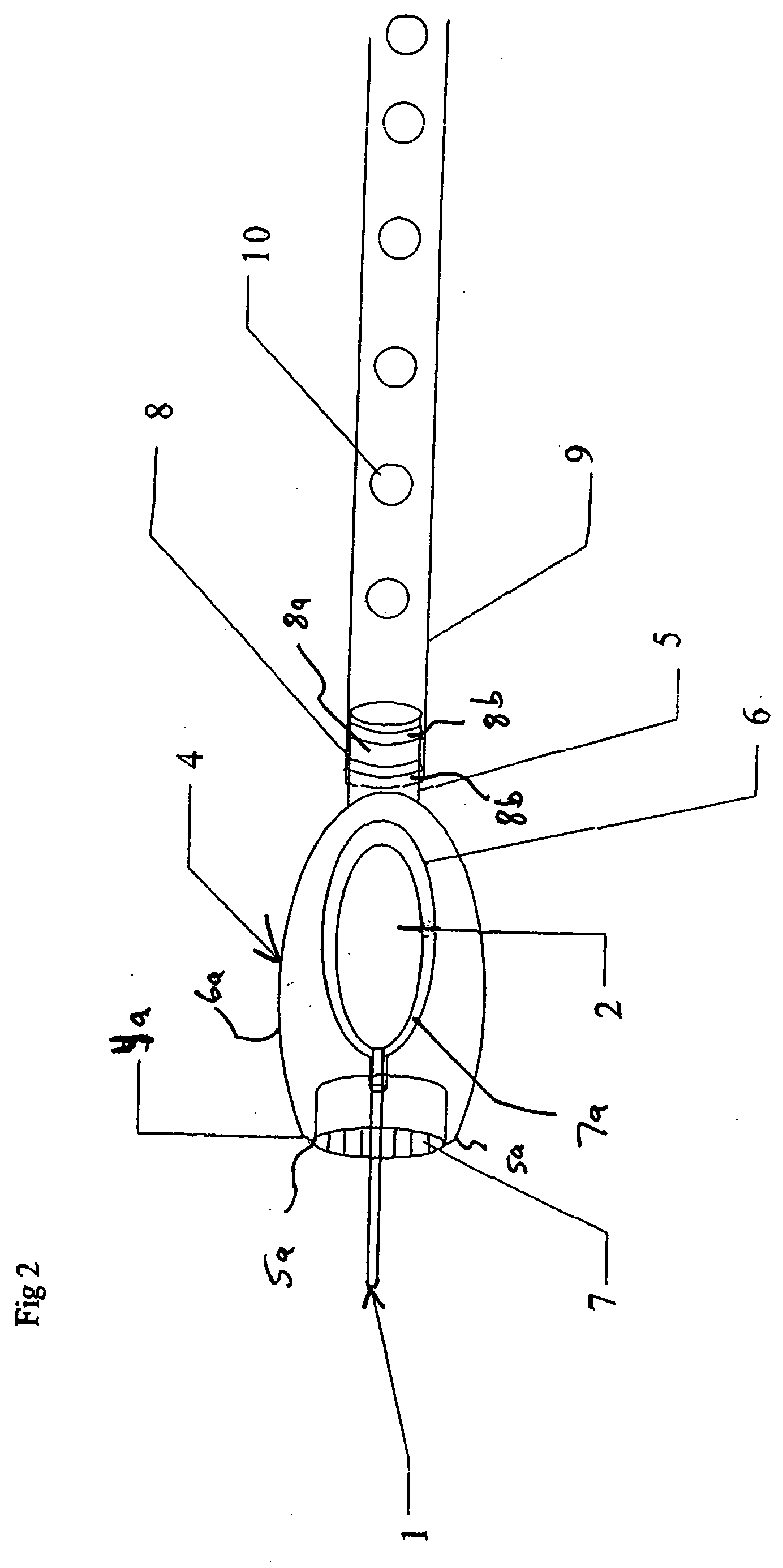Method of stripping diseased blood vessels from the human body
- Summary
- Abstract
- Description
- Claims
- Application Information
AI Technical Summary
Benefits of technology
Problems solved by technology
Method used
Image
Examples
Embodiment Construction
[0026] Referring now to the drawings where the purpose is to describe preferred embodiments of the invention and not to limit same, FIG. 1 shows a preferred embodiment of an endovenous cable 1 of the present invention. Endovenous cable 1 preferably comprises an elongate, flexible, solid, plastic (most preferably polycarbonate, although any suitable material may be used) rod approximately 30% longer than the average human leg, and most preferably about 100 cm in length. Endovenous cable 1 preferably has a cylindrical center section 1a, a thickness of about 1 mm, a first end 1b, and a second end 1c. Endovenous cable 1 is preferably strong enough to resist breaking when pulled by an adult male to strip a vein, and is preferably flexible enough to be threaded through a tortuous varicose vein with relatively gently applied distal force.
[0027] At each end 1b, 1c, respectively, of endovenous cable 1 are expansions 2, 3. Expansions 2, 3 take the general shape of an oval in plan view, and a...
PUM
 Login to View More
Login to View More Abstract
Description
Claims
Application Information
 Login to View More
Login to View More - R&D
- Intellectual Property
- Life Sciences
- Materials
- Tech Scout
- Unparalleled Data Quality
- Higher Quality Content
- 60% Fewer Hallucinations
Browse by: Latest US Patents, China's latest patents, Technical Efficacy Thesaurus, Application Domain, Technology Topic, Popular Technical Reports.
© 2025 PatSnap. All rights reserved.Legal|Privacy policy|Modern Slavery Act Transparency Statement|Sitemap|About US| Contact US: help@patsnap.com



